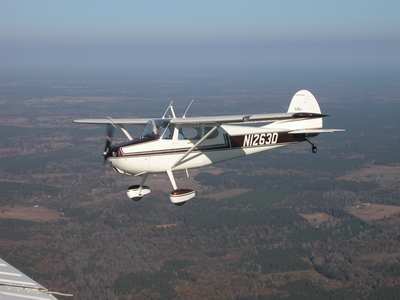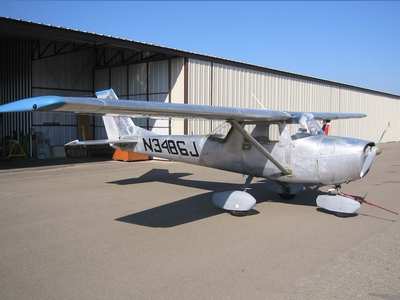Wed, May 23, 2012
Latest Effort Aimed At 100-Series Singles Produced Between 1946 And 1986
Cessna is building on a proactive safety initiative started in 2011 designed to educate single engine owner/operators on new inspection procedures. The latest effort is aimed at 100 series single-engine piston aircraft owners around the world, and informs them about new supplemental aircraft inspection procedures that will be added to 100 series Cessna service manuals. The supplemental inspections cover Cessna single-engine piston aircraft produced between 1946 and 1986.

"We've set up 40-hour training classes in Wichita for mechanics to be trained on the non-destructive inspection techniques, such as ultrasound and eddy current. These techniques will then be used to inspect high-time Cessna single engine airplanes. The intent is to not only teach them what they are looking for, but also how to identify issues that can occur more frequently with older, high-time airframes," said Tom Ronnau, Cessna's manager of Technical Service Propeller Products. "Owners are encouraged to make contact with their local Cessna service affiliate in order to schedule time to complete these mandatory inspections. The key with these inspections is to identify any serious corrosion or fatigue damage present, and if there is, get the airplane out of service and repaired."
The criteria for initial visual inspections will vary by model and aircraft age or hours of operation and will focus primarily on signs of corrosion or structural fatigue damage. Cessna authorized service providers will have special training and access to specific equipment for the inspections and for repairs, if required.
"Corrosion and fatigue are inevitable on any make and model of airframe with a high amount of hours. However, with early detection and proper maintenance, severity and effects can be minimized," said Beth Gamble, Cessna's principal airframe structure engineer. "The 100-series inspection requirements are very simple, and begin with a visual inspection that can be done quickly by a trained inspector during an annual inspection."
The inspection procedures are available at no cost on the customer access portion of the Customer Service page of Cessna.com. An interactive presentation is available on the customer access portion of the Customer Service page of Cessna.com and a short video explaining the inspection process is on Cessna's YouTube channel. (Photos from file)

More News
No Gyro Approach A radar approach/vector provided in case of a malfunctioning gyro-compass or directional gyro. Instead of providing the pilot with headings to be flown, the contro>[...]
Aero Linx: European Hang Gliding and Paragliding Union (EHPU) The general aim of the EHPU is to promote and protect hang gliding and paragliding in Europe. In order to achieve this>[...]
Make Sure You NEVER Miss A New Story From Aero-News Network Do you ever feel like you never see posts from a certain person or page on Facebook or Instagram? Here’s how you c>[...]
Also: Duffy Wants $$$, KS Airports, Morningside U’s Aviation School, New Airstrip In ID After 6 were killed in a helicopter crash over the Hudson River, several US Representa>[...]
Also: Hermeus Quarterhorse MK1, Seaplane Rating Guide, Vietjet A330neos, SFO Wacky Weed Bust As the air traffic controller shortage trudges on, the US Department of Transportation >[...]
 ANN's Daily Aero-Term (06.03.25): No Gyro Approach
ANN's Daily Aero-Term (06.03.25): No Gyro Approach ANN's Daily Aero-Linx (06.03.25)
ANN's Daily Aero-Linx (06.03.25) ANN FAQ: Turn On Post Notifications
ANN FAQ: Turn On Post Notifications Airborne 05.30.25: Anti-Helicopter Bill, PW Strike Done, All-Electric Bristell
Airborne 05.30.25: Anti-Helicopter Bill, PW Strike Done, All-Electric Bristell Airborne 05.29.25: ATC Bonu$, VX4 eVTOL Flies, Starship 9 Test
Airborne 05.29.25: ATC Bonu$, VX4 eVTOL Flies, Starship 9 Test




